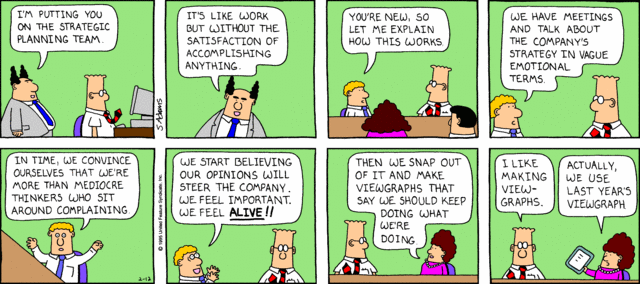Killing Creativity Softly With Antiquated Models
Having just completed my online teaching certification over the winter I was reminded how much more I have to learn regardless of degrees and experience. I signed up for the training in part because the graduate classes I lead for Siena Heights University at Lake Michigan College are blended so half of that sharing is online. Also having just entered a PhD program in Industrial and Organizational Psychology I need ongoing increasing competencies. Then there is the explosion of online learning in general, discussed in David Brooks' recent New York Times piece The Campus Tsunami.
I have mixed feelings about the completely online education but that stems from a personal need for face to face contact. I have known for more than 20 years that what really drives me is the moment one can see in the eyes of a client, student or associate that they "get it." The aura in their face which shows they not only gained a new understanding, but that they can walk in it and share with others. We may be able to get that from video conferencing, but that small moment is much more powerful live. At the same time, I'm clearly driven to change the mode of education where students learn for the test on Friday and can't remember it on Monday.
Which is why Sir Ken Robinson's Ted Talk below below is something I watch a couple of times a year. To remind me in every class in every semester to focus on the individual students; to understand what learning styles work best for them and how the subject applies to who they want to become. First as individuals, then to determine how the collective functions, and to alter my presentations accordingly. You might also enjoy Garr Reynold's blog Presentation Zen from which the graphic on the left is borrowed.
It's the same in our organizations. We can talk all we want about organizational learning, but it happens on an individual level through shared knowledge and experience at different paces. Knowing what our employees value, how they gain comprehension, and what their dreams are is the beginning of relationship trust without which very little growth is possible. If I want the organization to be profitably innovative, killing creativity, like killing hope, is another reason why American students rank so low on a global knowledge scale, and so many employees in this country are either not engaged or fully disengaged from their organizations.
Seek to understand before seeking to be understood really does change lives.
I have mixed feelings about the completely online education but that stems from a personal need for face to face contact. I have known for more than 20 years that what really drives me is the moment one can see in the eyes of a client, student or associate that they "get it." The aura in their face which shows they not only gained a new understanding, but that they can walk in it and share with others. We may be able to get that from video conferencing, but that small moment is much more powerful live. At the same time, I'm clearly driven to change the mode of education where students learn for the test on Friday and can't remember it on Monday.
 |
| Image: www.presentationzen.com |
It's the same in our organizations. We can talk all we want about organizational learning, but it happens on an individual level through shared knowledge and experience at different paces. Knowing what our employees value, how they gain comprehension, and what their dreams are is the beginning of relationship trust without which very little growth is possible. If I want the organization to be profitably innovative, killing creativity, like killing hope, is another reason why American students rank so low on a global knowledge scale, and so many employees in this country are either not engaged or fully disengaged from their organizations.
Seek to understand before seeking to be understood really does change lives.




Agreed. Ken Robinson is on to something here - I have watched this several times but should watch it every August.
ReplyDeleteGreat stuff, and I would also suggest that his two books, "The Element" and "Out of our minds" be required reading for teachers and anyone trying to re-think education. Watch all Sir Ken's talks, it's really inspiring. I especially like this 2010 RSA animation: http://www.youtube.com/watch?v=zDZFcDGpL4U
ReplyDeleteCheers, --- Phil (@PhilipBenz)
That is a phenomenal video Phil. I love RSA Animate's work and how it reinforces the importance of the speech. Daniel Pink's Drive by them is a must watch in my classes. This one will be two.
DeleteThank you.